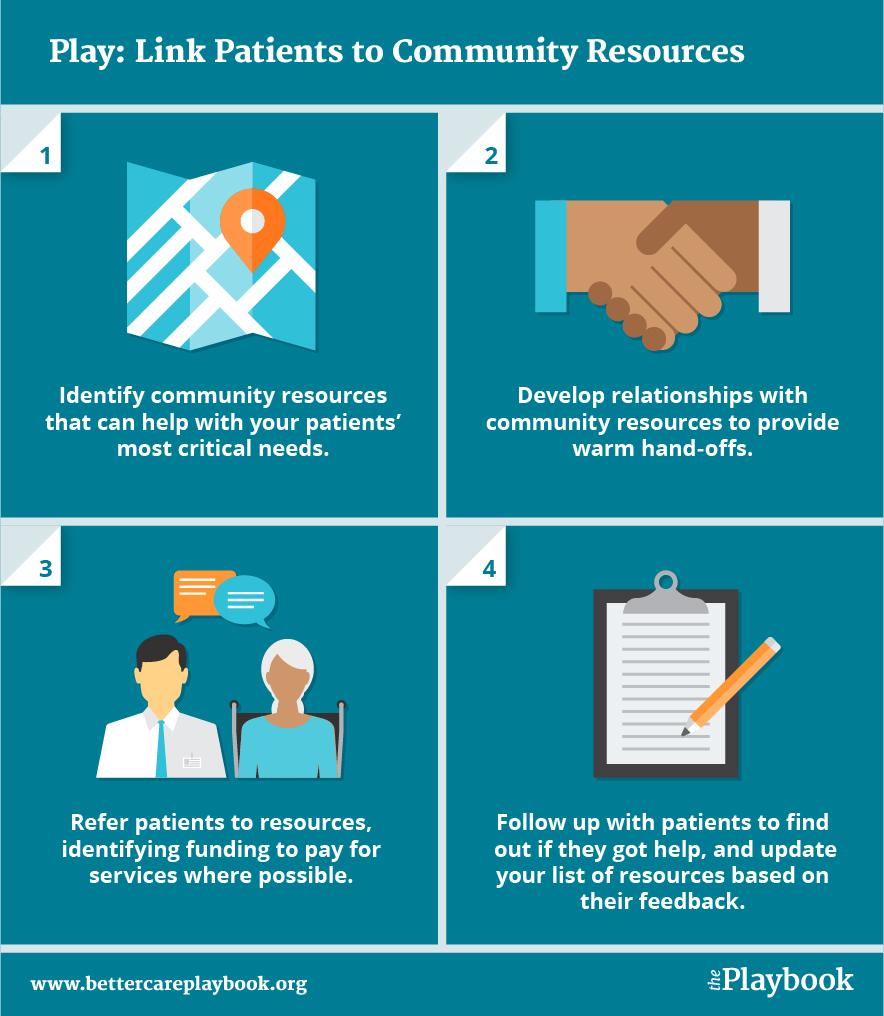Play Strategy
Housing, food security, income, and transportation are among the social needs shown to have a significant impact on health outcomes for people with complex needs, who may also need help with chronic disease self-management, dementia care, and social connectedness. Medical practices are unlikely to be able to meet all these needs. Instead, they can identify community resources and refer patients to them.
The goal of this play is to help you develop the necessary partnerships in your complex care program.


How to run the Play
- Identify your community resources, including their location, contact information, and accessibility to patients in your community. Consider how you might fund these services, either through a flexible fund as part of your program or through a relationship with a payer.
- Develop a relationship with community resources to provide warm hand-offs, and identify which members of the care team will manage these connections.
- Assess each patient’s needs and support system. Refer patients to resources, checking to make sure the patients can access these services based on their location and eligibility.
- Follow up to see if patients were able to get help, and update your list of community resources based on their feedback.
Tips and tricks
- While developing your process, engage patients and families to identify key social needs, develop your list of community resources, and make the referrals work best for them.
- Think about prioritizing partnerships with community resources focused on the most critical and prevalent issues in your population. For example, is housing more pressing for your patients than transportation?
- Ask yourself who is already touching the population you are working with whom you might learn from and partner with. For example, local Area Agencies on Aging help connect Medicare patients to resources. Try using 2-1-1, the United Way, and your local Chamber of Commerce to identify community resources. There is also a growing number of apps that now handle referrals to resources, such as Purple Binder.
- Consider how you’ll fund referrals to community resources. Many complex care programs have a flexible fund to pay for services outside the health system or a relationship with the payer to fund the services. Value-based payments allow the flexibility to cover non-medical services.
- It’s important to ask which team members will do the work of connecting patients to community resources. Social workers are often the go-to staff to make these connections. It may also depend on which needs are most critical and prevalent for your patients; if housing is an issue, consider hiring a housing coordinator.
- Consider using automated clinician prompts to incorporate community resource referrals into the clinical workflow.
FOR MORE INFORMATION
- Watch the recording of a webinar from the Aging and Disability Business Institute, “Finding Champions and Building Partnerships between CBOs and Healthcare Entities.”
- Learn more about automated clinician prompts to refer patients.
- Find local resources with the Eldercare Locator administered by the National Association of Area Agencies on Aging.
- Read more on Clinical-Community Linkages from the Agency for Healthcare Research and Quality (AHRQ).
- Learn more through profiles of successful partnerships on the AHRQ Health Care Innovations Exchange.
- For an in-depth discussion of successful clinical-community partnerships, read the “Linkages Between Clinical Practices and Community Organizations for Prevention: Final Report (October 2010).”
- Read about promising strategies for linking to community resources on the Better Care Playbook.
